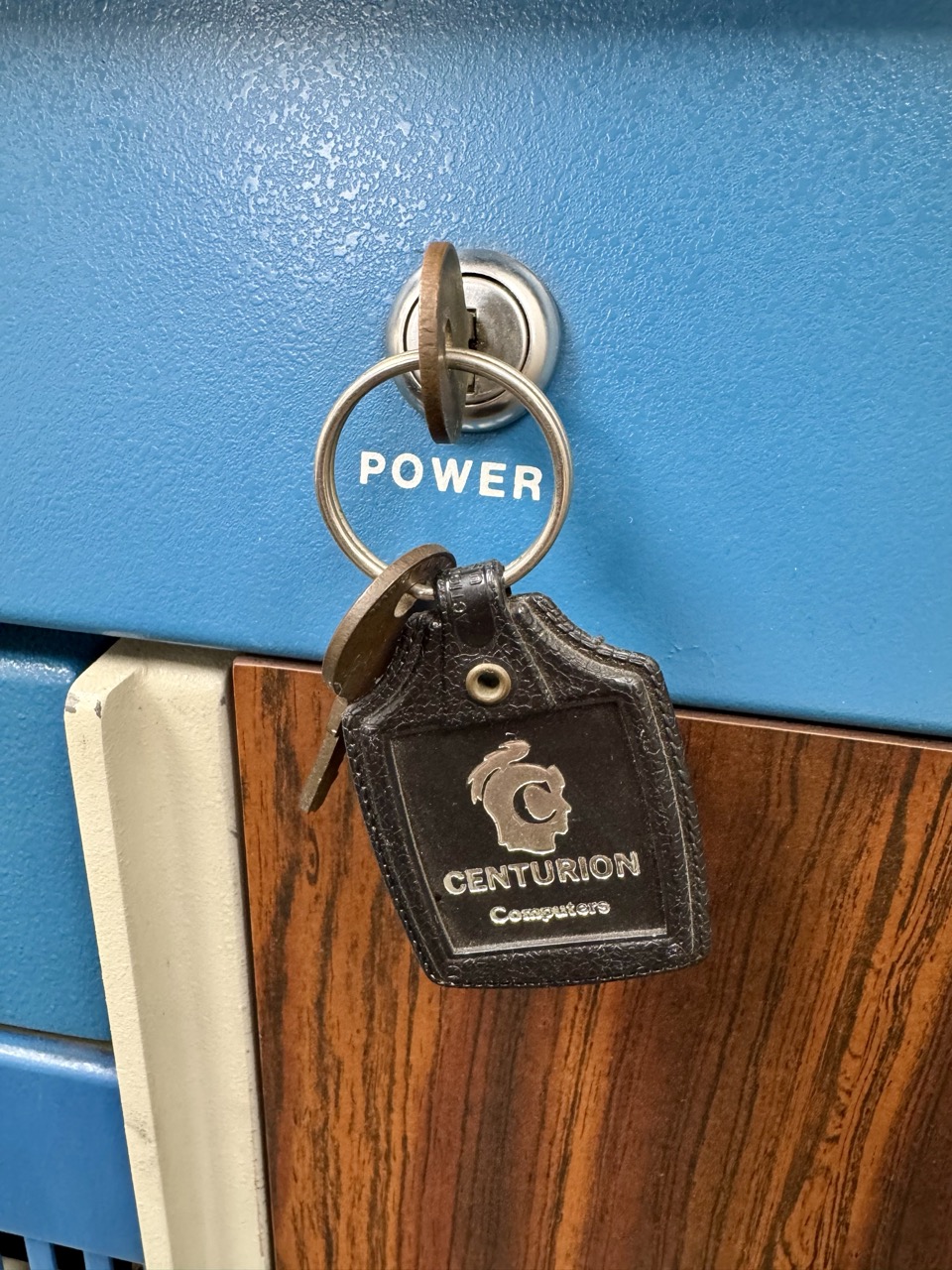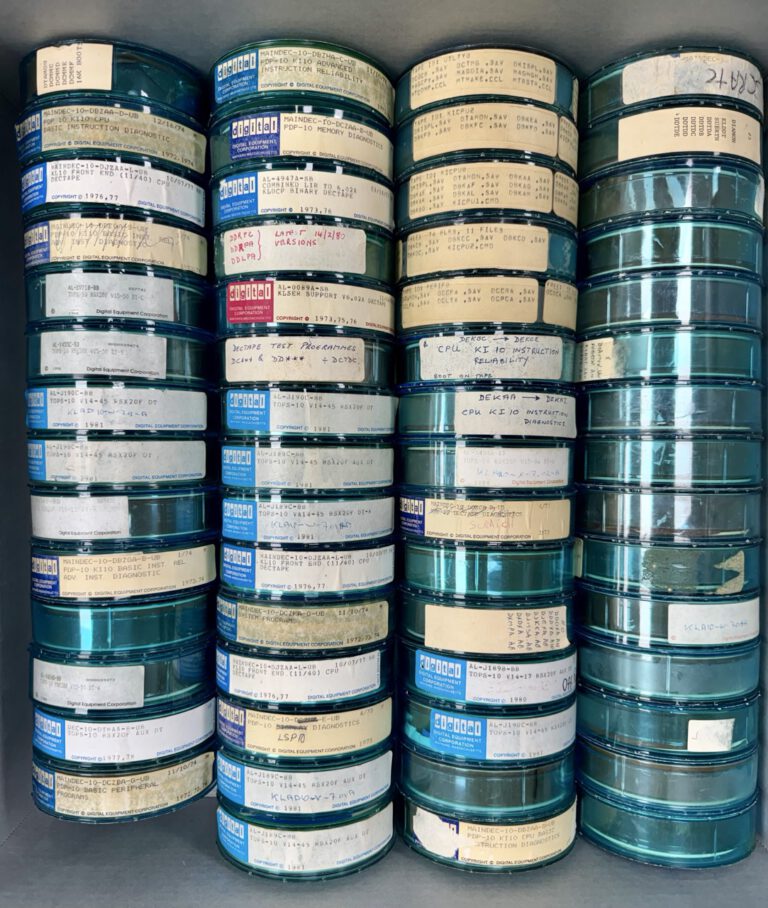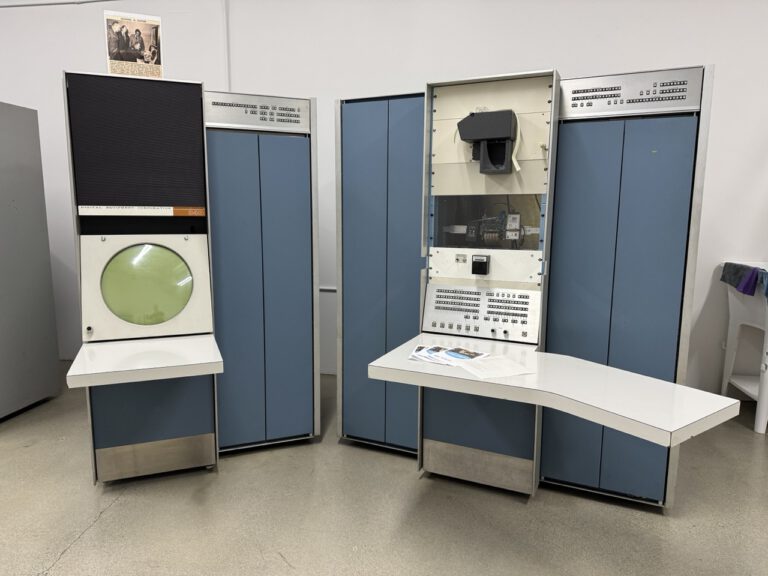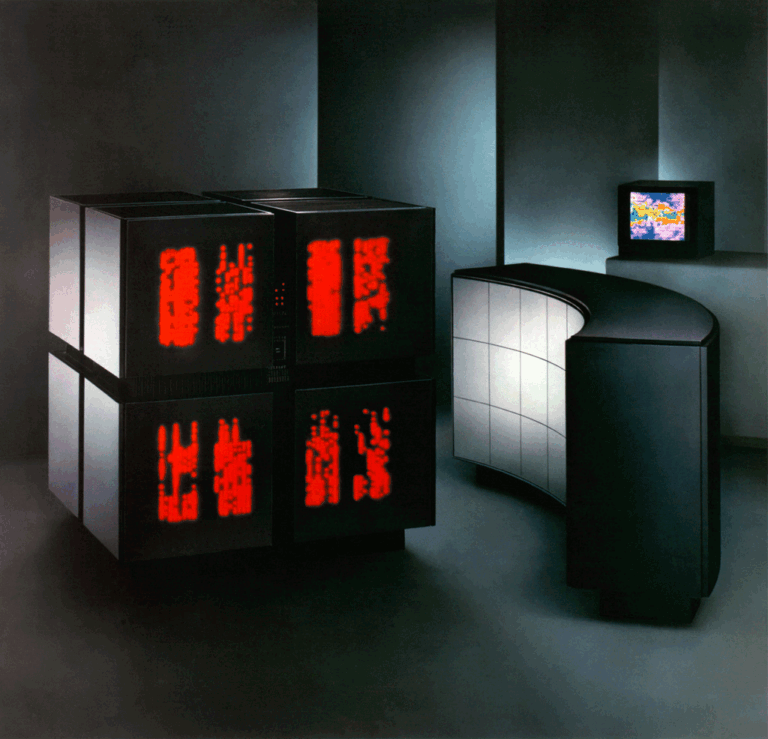Centurion Computer Corporation

The Centurion Computer Corporation CPU-6 was a mid-1970s minicomputer designed primarily for industrial control, data acquisition, and real-time processing applications. Built using TTL logic and early LSI components, the CPU-6 featured a 16-bit architecture with a relatively fast instruction cycle for its time, often under 2 microseconds. It supported both fixed-point and limited floating-point arithmetic and had a robust interrupt structure suitable for interfacing with a wide array of peripherals. The system was commonly deployed in laboratories, manufacturing environments, and academic settings where reliability and deterministic performance were essential. Though never achieving the market penetration of systems from DEC or Data General, the CPU-6 carved a niche among engineers and institutions seeking a dependable and customizable computing platform.
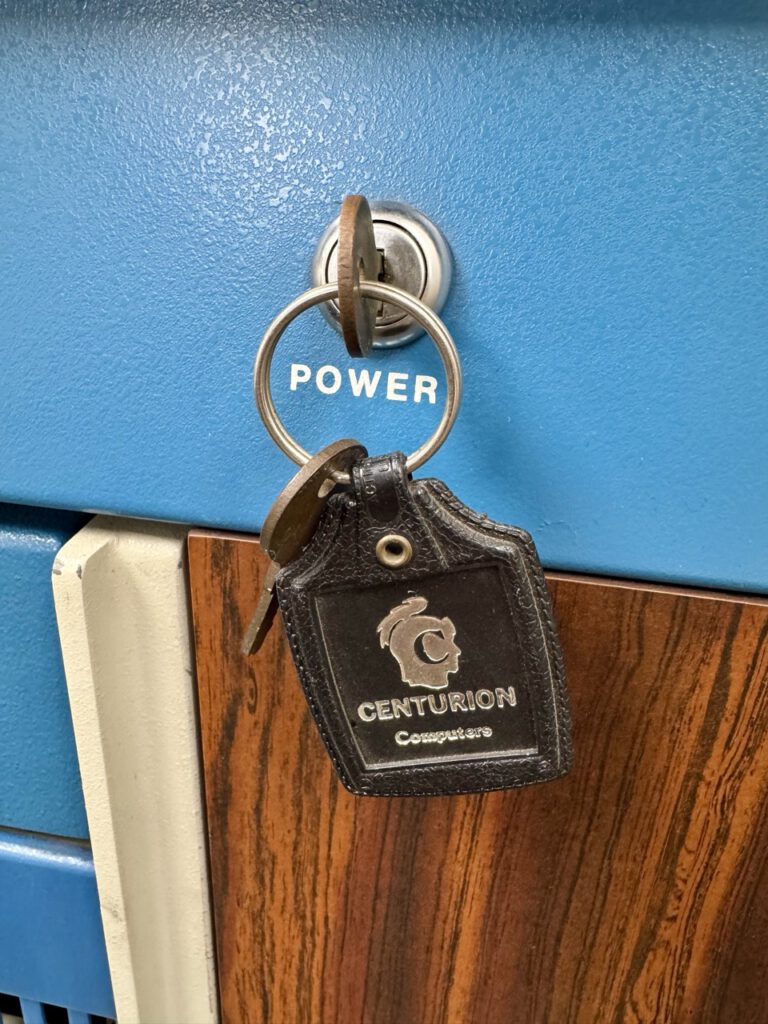
A very cool Centurion keychain.
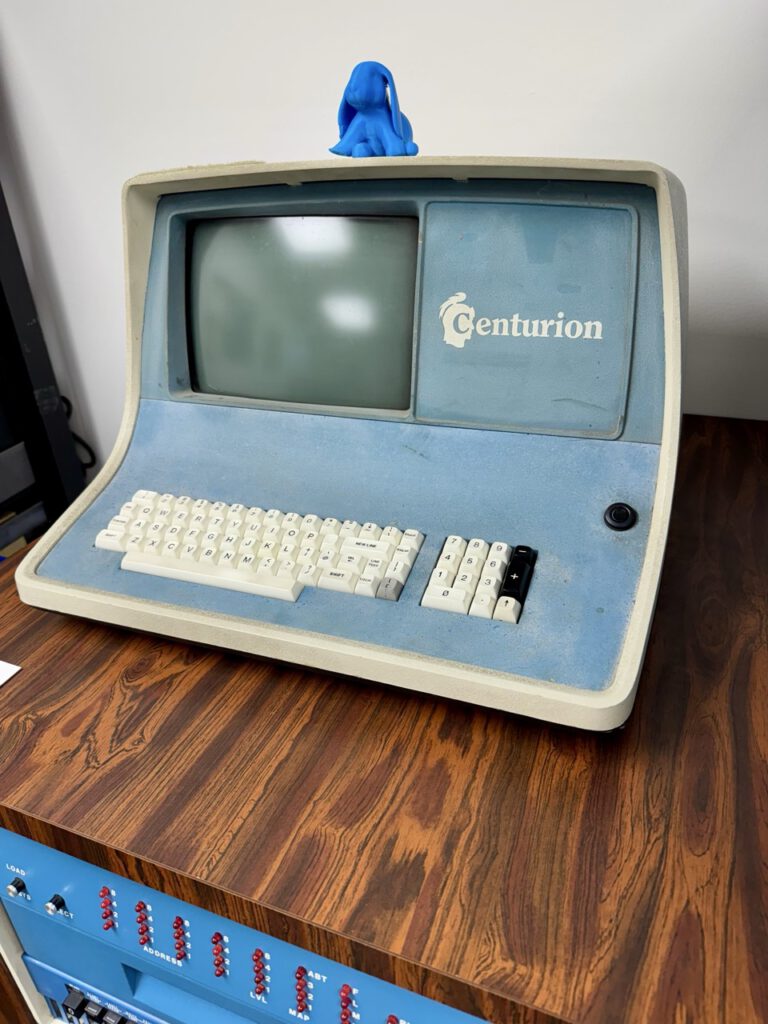
Centurion badged ADDS Regent 100 terminal.
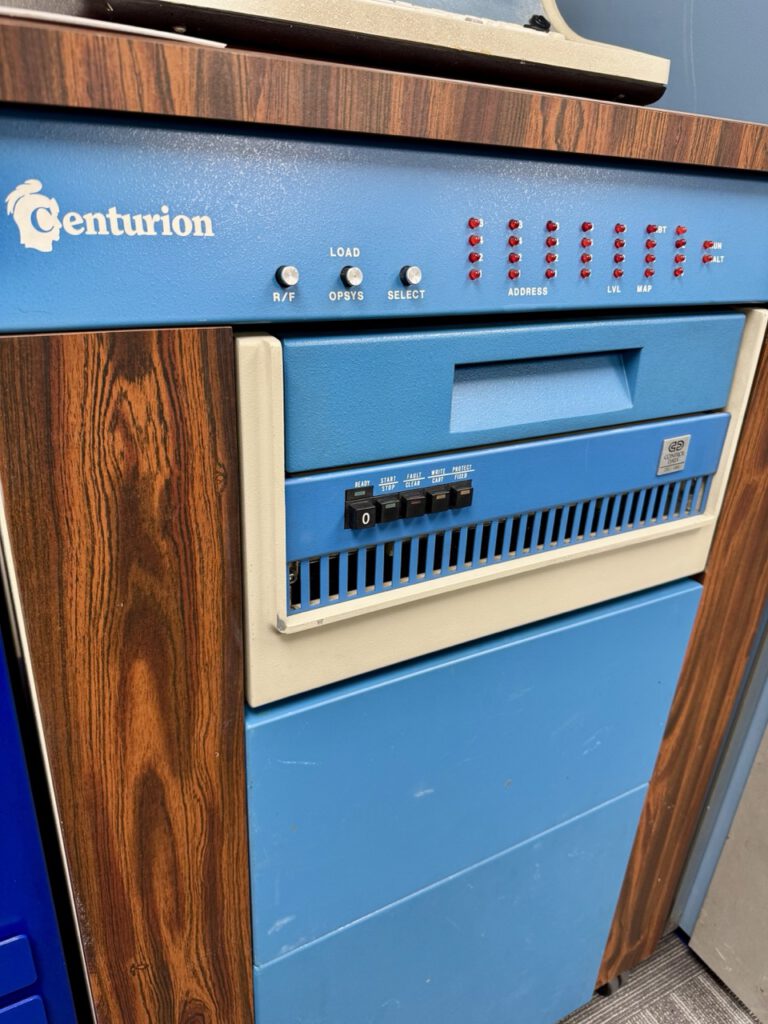
The Centurion featuring the CDC Phoenix drive. This we know: It isn’t crashed.
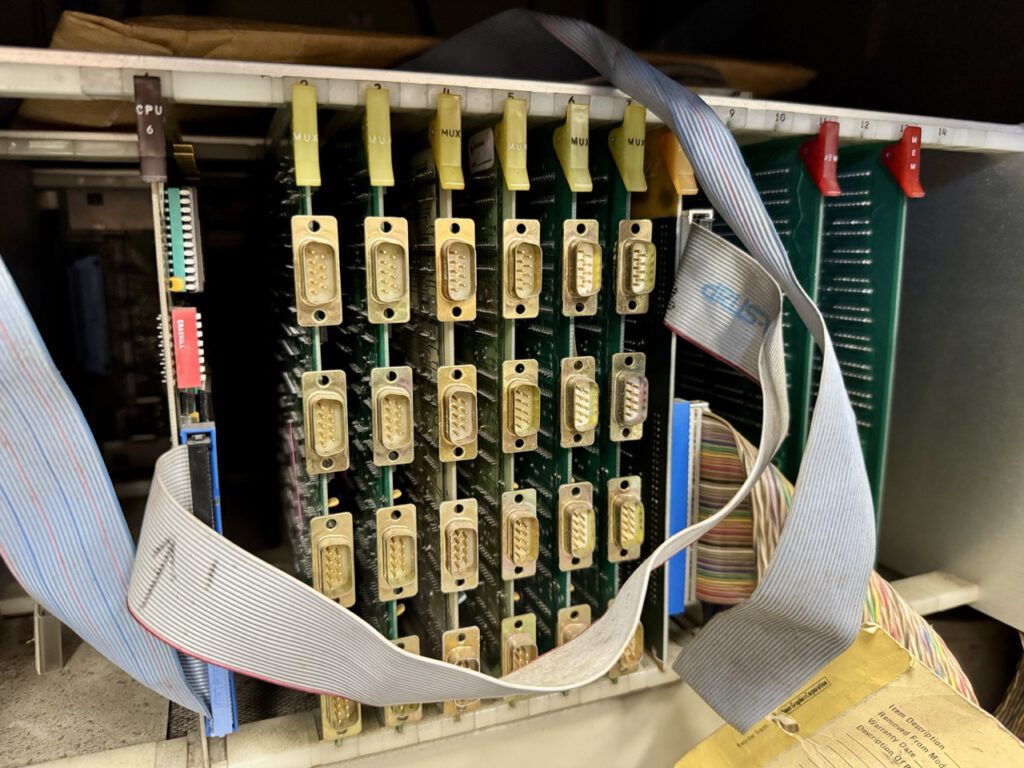
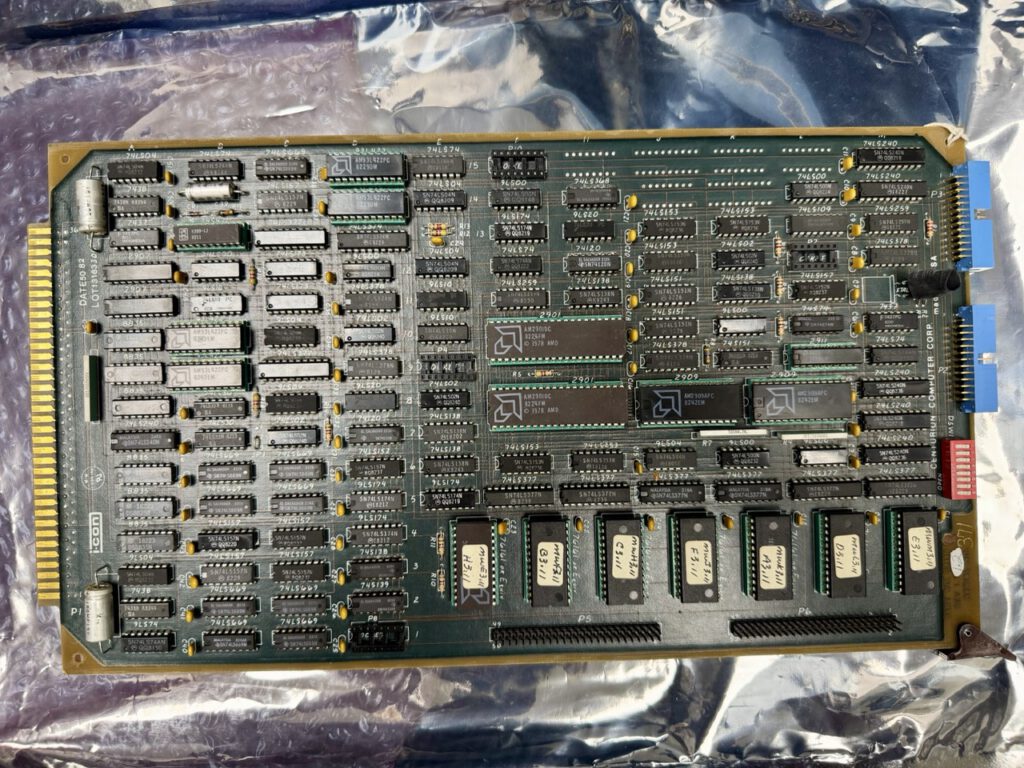
Our Centurion came configured with 24 serial ports. We have yet to understand why.
